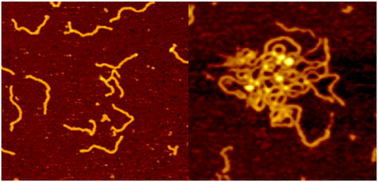Cytotoxic activity of copper(ii), nickel(ii) and platinum(ii) thiosemicarbazone derivatives: interaction with DNA and the H2A histone peptide†
Abstract
Metal complexes still represent promising pharmacological tools in the development of new anticancer drugs. Bis(citronellalthiosemicarbazonate)nickel(II) is a metal compound extremely effective against leukemic and NCS cancer cell lines. Preliminary experiments performed with this compound and with its Cu(II) and Pt(II) analogues evidenced alterations, detectable by comet assay, in the DNA of treated U937 cells. In addition, [Cu(tcitr)2] and [Pt(tcitr)2] were also able to induce gene mutations and produce frameshift events. To gain further insights into the mechanism of action of these metal compounds, we carried out a multidisciplinary study to investigate whether their biological activity can be ascribed to the direct interaction with DNA or with chromatin. The DNA interaction was investigated by means of CD and UV-Vis spectroscopic techniques and by AFM, whereas the chromatin interaction was studied by analyzing the effects of the compounds on the structure of a peptide that mimicks the potential metal binding site in the “C-tail” region of histone H2A by means of NMR, CD, UV-Vis and MS. The intensities of the effects induced by the metal compounds on the peptide follow the order [Ni(tcitr)2] > [Pt(tcitr)2] ≫ [Cu(tcitr)2]. From the AFM data, a remarkable DNA compaction was observed in the presence of [Pt(tcitr)2], while [Ni(tcitr)2] causes the formation of large interlaced DNA aggregates.



 Please wait while we load your content...
Please wait while we load your content...